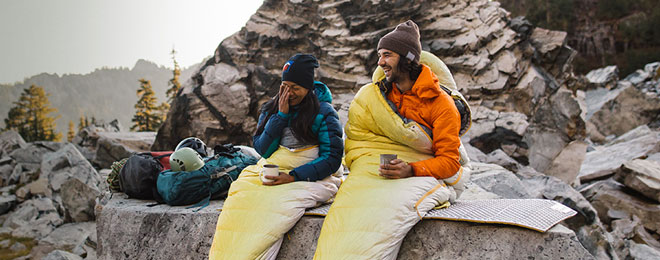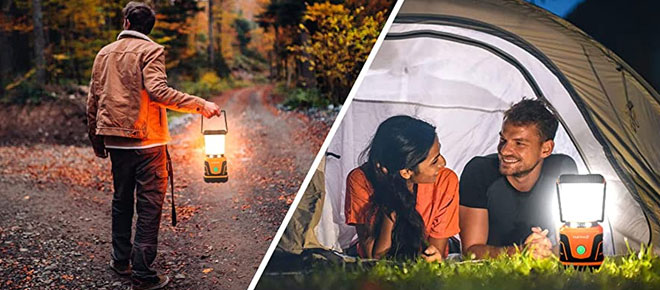How to Choose the Best Camping Gear

Spending time outdoors is an incredible way to connect with nature. But a great camping trip can quickly turn into a chaotic experience without the proper equipment.
A quality tent, sleeping bag, and camp stove can make all the difference. So take some time to test out your gear at home and get ready for the ultimate outdoor adventure.
Tent
Whether you’re planning on taking your family out for a weekend of camping or heading off for a solo backpacking adventure, the tent you choose is one of the most important pieces of gear in your arsenal. Choosing the right tent can help you feel secure and comfortable throughout your trip, which will lead to an enjoyable camping experience.
There are several different types of tents on the market, and each is tailored toward a specific kind of camping. Understanding these differences can help you narrow down your options and find the perfect tent for your next camping adventure.
Some of the most important things to consider when choosing a tent are the size and capacity, weatherproofing, and comfort level. If you plan on camping in the rain, look for a tent with a waterproof rain fly that will keep you dry in the event of a sudden downpour. In addition, a well-ventilated tent is key for keeping you cool and comfortable.
For family camping trips, look for a tent with multiple doors to avoid everyone climbing over each other when going in and out at midnight for bathroom breaks. Lastly, consider the ease of setup when selecting a tent. Larger tents typically have a longer set-up time than smaller tents, but there are still plenty of easy-to-assemble options out there. If you're interested in purchasing a tent for your family camping adventures, it's worth checking for any available 4wd Supacentre Promo Code that could potentially provide you with cost savings or discounts on your chosen tent.
Sleeping Bag
A good sleeping bag is the most important piece of camping gear. It keeps you warm, provides comfort, and is especially vital when temperatures drop at nightfall (and in cold climates, hypothermia is a real concern).
The best camping sleeping bags are both warm and comfortable, with rugged shell fabrics and a soft lining. They're typically lightweight and inexpensive—a solid investment for an item that will likely be used year after year.
For most campers, the choice is between synthetic or down insulation. While down is more luxurious, it's also heavier and less packable than synthetic fill. The majority of our ranked sleeping bags have synthetic insulation, including the two most affordable options: the Coleman Brazos and the Coleman Kompact 20. Both are excellent camping sleeping bags, though the Brazos' smaller interior can feel a bit confining for taller campers, and its insulation loses effectiveness when wet.
Backcountry campers will want to consider a mummy-style bag like NEMO's Forte, which has a 22-degree temperature rating and packs down to the size of a water bottle in its compression sack. Its mummy shape is very comfortable and provides more warmth than many rectangular bags, but it doesn't seal off your head as well as the popular North Face One Bag or the Coleman Arctic Zone. It is, however, an excellent option for those who are unsure of their camp's season.
Cookware
Having the right cookware for camping is essential for making meals in the outdoors. You need a camping cook set that’s lightweight, durable, and compact enough to fit in your rucksack. You’ll also need a stove to heat your campfire food and water.
A good quality camp cook set will include a stove, pots, and a frying pan that can all be nestled together. It should also have a kettle and maybe even some cups that insulate well to keep your drinks hot. A good camp cook set will also be easy to clean and use with limited water. Look for a nonstick camp cook set or one made from enameled stainless steel that distributes heat evenly and is safe to use with metal utensils.
You should also bring a knife that is good for cutting meat, veggies, bread, and other soft foods. Look for a serrated knife that will slice and dice these types of foods. You will also want to bring a small first aid kit that includes bandages, antiseptic, alcohol wipes, acetaminophen/ibuprofen, and medical tape in case of an injury or sickness while you’re camping. A lightweight and compact backpacking shower bag is a nice addition to your camping gear as it can be strapped to the top of your pack to make getting clean in the wilderness a lot easier. This is especially useful if you plan to do some hiking on your camping trip.
Stove
A camp stove is a must-have piece of camping gear. Whether you’re a group campsite junkie whipping up gourmet game hen for your friends and family or a solo camper reheating canned soup, having a reliable cooktop makes camping more comfortable and enjoyable.
The type of camp stove you need depends on how much you plan to cook and where you’re going to use it. For example, if you’re backpacking or doing an extended backcountry hike you’ll want a lightweight and compact backpacking stove that can simmer well and is efficient at low temperatures.
Most backpacking stoves on the market feature a burner head that screws onto a small canister filled with propane or a mix of propane and butane (also known as “camping fuel”). These types of stoves are lightweight, packable, and easy to use. They burn cleanly and are fairly efficient in cold weather, although they require shielding from wind to perform optimally.
Other backpacking stoves utilize a separate fuel bottle that is pressurized by a pump, with output regulated by a valve. The types of stoves are more versatile and tend to be faster at boiling water than propane or mixed-fuel canister models. However, they could cost more and are not as fuel-efficient at lower temps or for simmering. Some also don’t have the same stability as screwin camp stoves. Check the spec of your chosen stove to see how wide its cook surface is, as this will affect what kind of pots and pans it can hold side-by-side. If you're considering purchasing one of these backpacking stoves, remember to look for any available sports-outdoors that could potentially provide you with cost savings or discounts on your chosen stove.
Water Bottle
Keeping yourself well-hydrated is one of the most important aspects of camping. You may not be able to find a water fountain in the wilderness and drinking from rivers, lakes, and ponds could carry dangerous bacteria that can lead to serious illness. A great way to ensure you always have fresh, clean water with you is by bringing your bottle.
Bottles made for hiking and backpacking are light but tough, able to withstand the drops and rough use they're likely to get on long hikes. A classic option is a Nalgene Wide Mouth, which has been lauded by experts and consumers alike for its low weight, sturdy plastic build, and leak-proof design that won't suffer from short drops like disposable bottles will. For those who are looking for a more compact option, ultralight options like the HydraPak Seeker and Platypus Platy 2.0 fold down into themselves to take up almost no space in your pack when empty.
Other features to consider when choosing a bottle include the type of handle and whether it has volume measurements. Bottles with loop handles are a popular choice amongst hikers as they allow you to hold them in both hands and can be hooked onto packs easily. Narrow-mouth bottles like Sigg are great for a quick drink on the go but are harder to clean and don't allow you to add ice cubes or other ingredients to your drinks. Wide-mouth bottles with measurements on them are ideal if you're using your bottle to cook or mix energy drinks at camp as they make it easier to see how much you're adding.
Clothing
Whether you're camping in the summer or winter, having the right clothing can make all the difference. If you're planning to go swimming, make sure to pack a bathing suit. You'll also want to have a pair of water-resistant hiking boots. Having these will help you avoid wet shoes and socks that can be uncomfortable and can also lead to blisters.
Another essential piece of gear is a headlamp. This is especially useful if you're planning on doing any nighttime activities like setting up camp or going on a hike. It's important to get a headlamp that has a high SPF rating to protect against sunburn.
If you're going to be camping in the winter, you'll need a few extra layers of clothing. Thermal base layers made from wool or synthetic materials are a good choice, as they are breathable and quick-drying. You should also bring a heavy-duty outer shell to help block wind and rain.
A fleece vest is a great addition to any winter camping wardrobe and can be worn under a jacket or over a T-shirt. Finally, you'll want to have a pair of insulated gloves and a hat to protect against cold weather conditions. A hat is also useful for protecting your face and neck from the sun. It's important to choose a hat that has a wide brim and is made from breathable material.
Conclusion
choosing the best camping gear doesn't have to be a daunting task. By considering the location, weather, and personal preferences, you can select the right gear for your needs. Don't forget to invest in high-quality equipment that will last you for years to come. With this comprehensive guide, you'll be well on your way to enjoying the great outdoors with the right camping gear.








